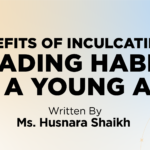Curiosity is a natural human instinct; Children are often full of questions about their surroundings. Tapping on this tank of questions is what a good educator relies on to facilitate learning. Jean Piaget was one of the forerunners in implementing the learning cycle model. The learning cycle is a sequential process for learning and instruction. Students are guided towards learning by channelizing their innate curiosity. Teachers also get a road map to implement instructions in the learning cycle. The learners are allowed to explore a given topic, Develop it through their experience and finally apply that concept to new learning situations.
Kolb’s learning cycle is an extension of Jean Piaget’s learning cycle. David Kolb has taken into consideration individual difference while addressing learning styles. In his Experiential learning model proposed in 1984 Kolb describes four dominant learning styles which are always a combination of two learning preferences on two dimensions: “Feeling versus thinking” and “watching versus doing”
Every learner will score differently on these two important dimensions of learning:
• The diverging learning style, combining watch and feel. People with this learning style are good at idea generation and brainstorming. They have a broad interest, are open-minded, and like to work in groups.
• The assimilating learning style, combining watch and think. People with this learning style like structure, clear explanations, and a logical approach. They are interested in concepts, ideas, and models. They like lectures and reading.
• The converging learning style, combining doing and thinking. People with this learning style are practical and are focused on solving problems. They are technical and application-oriented.
• The accommodating learning style, combining feeling and doing.: People with this learning style are hands-on and very intuitive. They like challenges and an experiential approach based on gut feeling.
In a course there will always be a variety of people and preferred learning styles. Designing a course with the learning cycle of Kolb will create an effective learning environment for all styles.
Over a period of time a great deal of study was carried out to bring out learning styles that not only arrested the interest of the learner but made learning a lasting affair. Mike Bell in his book of The Fundamentals of Teaching: A Five-Step Model to Put the Research Evidence into Practice. This new book combines five different research-reviews and includes only those methods where there is wide agreement. These effective methods are arranged in the order to making teaching more meaningful. In fact his work in the field of evidence based research has brought a change in the teaching learning and assessment process. He summarizes the Cycles of learning as:
This means that assessing your students’ prior knowledge is a vital first step to ensure your words do not ‘fall on deaf ears’. If you find that prior knowledge is missing, repairing this is an important first step in their learning.
Step 2: Presenting new material
These include:
• Recognizing the Working Memory limit to ensure that you do not overload your students with too much new information at one time.
• Linking to Prior Knowledge to help students make connections which lead to good long-term memories.
• Using a Multi-sensory approach to make use of more parts of your students’ brains for learning.
• Giving your students an Advance Organizer to help them see the big-picture of your topic as you teach the detail.
• Linking Abstract ideas to Concrete Examples to enable students to understand the more difficult ideas you teach.Step 3: Challenge
These are ways to set your students tasks which are most likely to make their learning of the new material effective.
• To know what the task is, you can use Modelling and Worked Examples to show what a good answer or product would look like.
• You can set tasks which are not just words by setting Graphical and other Non-linguistic tasks.
• You can get your students to improve their planning, monitoring and evaluation using Metacognition.
• If students work effectively in groups, Cooperative or Collaborative methods are effective to promote thinking.
• Thinking tasks, such as problem solving and hypothesis testing can deepen your students’ knowledge and consolidate the surface thinking
These are methods to show the student how to improve. Note the importance that they implement the feedback, not simply receive it!
There is no ‘best’ way to give (and receive) feedback. You could give it verbally or written. Students get feedback by marking their own (or another student’s) work.
These are methods which give the student the opportunity to develop long-term memories by revisiting the new material over time. The evidence, both from the classroom and from neuroscience, is that spaced repetitions are vital to create long term memories.
This means that it is not so much the individual teaching methods that are important, it is whether the student has been taken through the Learning Cycle
1. Prior Knowledge: Ensure there is something to connect to
2. Presentation: Initiate the pathway
3. Challenging Task: Activate the pathway
4. Feedback for Improvement: Check that it’s the right pathway
5. Spaced Repetition: Secure long-term connections by re-using the pathway over a period of time.
Cycles of learning may change in the number of stages based on our understanding of the brain however the cyclic nature may never take a linear path as always the new knowledge will be dependent on the old and will keep linking itself in a cyclic process of old learning to new learning.











